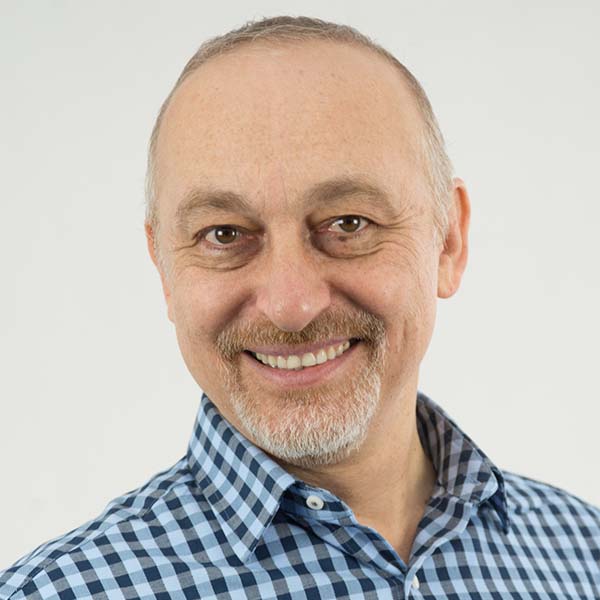Biotech firm buys virus detection and characterization tool spun out of the Photonics Center
A new technique of virus detection and characterization invented by a multidisciplinary team at BU drew a step closer to making a substantial impact in healthcare, as alum George Daaboul’s startup NanoView was acquired by biotech firm Unchained Labs. Daaboul (ENG’09, ’13) co-developed the point-of-care multi-pathogen test technology with his mentor, Distinguished Professor Selim Ünlü (ECE, MSE, BME).
In its original incarnation, the BU-built sensor might someday be used to stop the spread of Ebola and other hemorrhagic diseases in under-resourced countries and perhaps even quash global pandemics. Moreover, its ability to detect tiny particles might make the device a powerful weapon against cancer, heart and neurological conditions, as well as a tool to develop gene therapies. Now, the technology is poised to make an impact on characterization of viral vectors—an essential component of emerging gene therapies.
Called the Single Particle Interferometric Reflectance Imaging Sensor (SP-IRIS), the microfluidic device shines light waves from multi-color LED sources on artificial or biological nanoparticles (which could come from saliva, urine, or blood) bound to the sensor surface. The way the light waves bounce back to the sensor provides a picture of the nanoscale viral particles present—while tuning out bacteria, proteins, and other flotsam and jetsam in the sample. That will give clinicians and researchers more accurate data, faster, and at a lower cost than conventional methods.

The technology has its origins in Selim Ünlü’s lab in the BU Photonics Center. Holder of 21 patents, with more pending, Ünlü—who was the 2021 BU Innovator of the Year—has been working on nanoparticle imaging for nearly two decades. His faculty collaborators include microbiologist John Connor, an associate professor in the Chobanian & Avedisian School of Medicine.
Daaboul was a BME undergrad taking Ünlü’s electronics course when the professor recognized his potential. Ünlü convinced him his talents were ideally suited to nanoparticle imaging research. He gave Daaboul and his friend Rahul Vedula (ENG’09), another strong BME student, a copy of the textbook Fundamentals of Photonics, and a month to read it.
By the end of their senior year, the duo had won the BME Best Senior Design Award with a project imaging 100-nanometer particles on a surface.
Daaboul re-enrolled in ENG for a master’s and, eventually, a PhD and continued the research. In 2011, Daaboul won the Center for Integration of Medicine and Innovative Technologies (CIMIT) Student Prize for Primary Healthcare, finishing in first place in a competitive, nationwide contest. The $150,000 award allowed Daaboul and team to iterate and improve upon the SP-IRIS technology.
Vedula, too, stayed on as an ENG researcher for a few years, then completed medical school and went on to become a resident physician at Brigham and Women’s Hospital in Boston.
Ünlü also recruited David Freedman (ENG’10) and Steven Scherr (ENG’17) to the SP-IRIS project. Both earned PhDs at ENG—Freedman in ECE, Scherr in ME. With biomedical engineer Daaboul, the trio represented all three ENG departments. “They all brought in different skill sets,” says Ünlü.
The young researchers helped to found a startup, based in the Photonics Center, that eventually became NanoView. They were aided by National Science Foundation grants for virus detection, prototyping, and entrepreneurship, and guided by Ünlü.
“I benefited a lot from Selim’s mentorship,” Daaboul told The Brink. “He allowed us autonomy in his lab, which enabled us to be independent, but he was very supportive when needed.”
Two exciting aspects of the SP-IRIS technology lie in its ability to detect exosomes and lentiviruses. Exosomes are tiny vesicles that carry messages between cells. They can be found in blood, saliva, and urine samples, and scientists believe they might carry biomarkers or other indicators of tumors, heart trouble, or neurodegenerative diseases. An even more ambitious theory holds that exosomes could be commandeered to deliver drugs to specific types of cells.
Lentiviruses are viral vectors that can be harnessed for use in gene therapies. “Gene therapy development is exploding, and researchers are screaming for better tools,” said Unchained Labs Founder and CEO Tim Harkness in announcing the purchase of NanoView. “Our calling is to provide them with better ways to characterize these crazy complex vectors, and I am fired up to add NanoView’s gene therapy solutions to our portfolio.”
Ünlü is proud to see his protégés succeed at commercializing their research. “As an engineer, you want to solve actual problems,” he says. “You built something in the lab, did some fantastic measurements, published a paper—wonderful. But that shouldn’t be the end of it.”
Banner: Images of exosomes detected by the SP-IRIS technology. Courtesy of Selim Ünlü.
